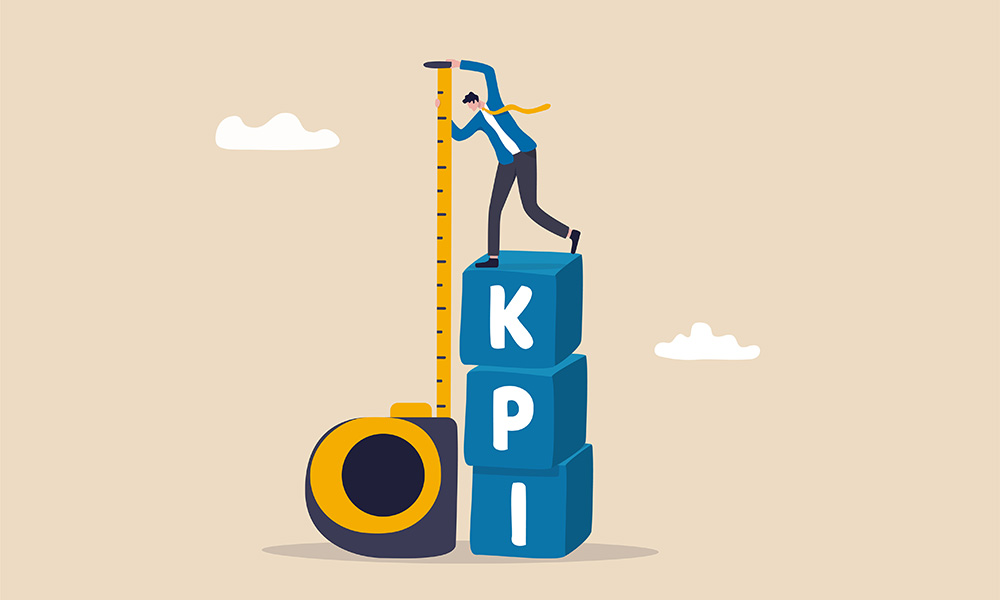The Most Important KPIs That Drive Business Strategy
Back to all Small Business guides

KPIs, or key performance indicators, are quantifiable measurements that help business owners and managers to measure and evaluate the effectiveness of their solutions, functions and processes. Their aim is ultimately to drive performance improvements. While their value is clear to see, the fact that they can focus on multiple areas of a business, such as finance, operational performance and customer satisfaction, means it can be difficult to determine which ones are most helpful to your business and where you will be able to gather the most valuable data.
The Importance of KPIs and Business Strategy
KPIs specifically help determine a company’s strategic, financial and operational achievements. As KPIs are measurable, they provide a simple way to see if you are hitting key targets and achieving your business goals.
KPIs can be applied to pretty much every aspect of your business. For example, customer-focused KPIs will likely focus on customer satisfaction and retention, whether that’s the amount of time it takes for customer issues to be resolved or the type of request customers are making so a company can better understand the problems it regularly faces.
Process KPIs, meanwhile, will focus more on how tasks are performed and whether there are process, quality, or performance issues that need to be resolved. Metrics to look at here could include production efficiency and error rate.
Even areas such as marketing can benefit from KPIs, with insight into how effective marketing and promotional campaigns have been driving future decision-making. Common metrics here include conversion rates on call-to-action content and website traffic.
For many businesses, though, it will be the financial KPIs that are of most interest. Even here, there are many aspects of finance that KPIs could focus on, from profit and revenue to liquidity ratios and cash flow. The KPIs that will work best for you will vary depending on the type of business and your goals, but there are several financial KPIs that are always worth paying attention to.
Important Financial KPIs
Revenue growth
As you’d probably expect, revenue growth measures the percentage increase in revenue, usually monthly. It’s particularly useful for young and start-up businesses and provides a strong indicator of how quickly your business is growing. While you may hope to see continual growth each month, it’s important to be aware that the growth rate will likely decrease as a business matures and may fluctuate depending on any seasonal changes affecting your business. For this reason, it’s a good idea to measure your revenue growth over a longer period, such as 12 or 18 months, to get a more accurate reading of the situation.
Revenue sources and concentration
As well as understanding how much revenue you’re generating, it’s also a good idea to analyse where this income comes from, so look at your revenue streams by client and service. This will help you identify profitable customers and services and can offer invaluable information when making decisions on how to grow your business.
Revenue sources are also closely tied to revenue concentration, which helps you identify how much revenue each client or project produces for your business as a percentage of total revenue. So, if, for example, this KPI shows that you’re heavily reliant on one or two clients, you’ll know it’s time to focus on diversifying your portfolio to spread the risk. It will also help you to calculate the RoI for each client.
Working capital
Working capital is the amount of cash a business has to ensure it can meet the short-term financial obligations that keep day-to-day operations ticking over. It is calculated by subtracting current liabilities from current assets.
If you have more assets than liabilities, you have positive working capital, which means you have enough cash to cover your liabilities and additional funds left over. However, if your liabilities are greater than your assets, you have negative working capital and so don’t have enough money to cover your financial obligations. As a guide, aim for a ratio of between 1.5 and 2.1.
Sales growth rate
In addition to revenue growth, sales growth is a key indicator of business success. As with revenue growth, you should monitor this over time to see how sales are performing and any struggling areas. When looking at sales growth percentages – calculated as current net sales - previous net sales / previous net sales x 100 – you always want to see a positive number; if it’s negative, your customers aren’t connecting with your business, so it’s time to look at changing your strategy, whether that’s introducing new products or services or putting more resources into promoting your offering.
Net profit margin
Profit is key to any business – if you want to grow and develop, you need to generate profit. When it comes to KPIs, you could choose to analyse several profit markers, such as gross profit margin or operating profit margin, but net profit margin certainly shouldn’t be overlooked. As net profit margin measures